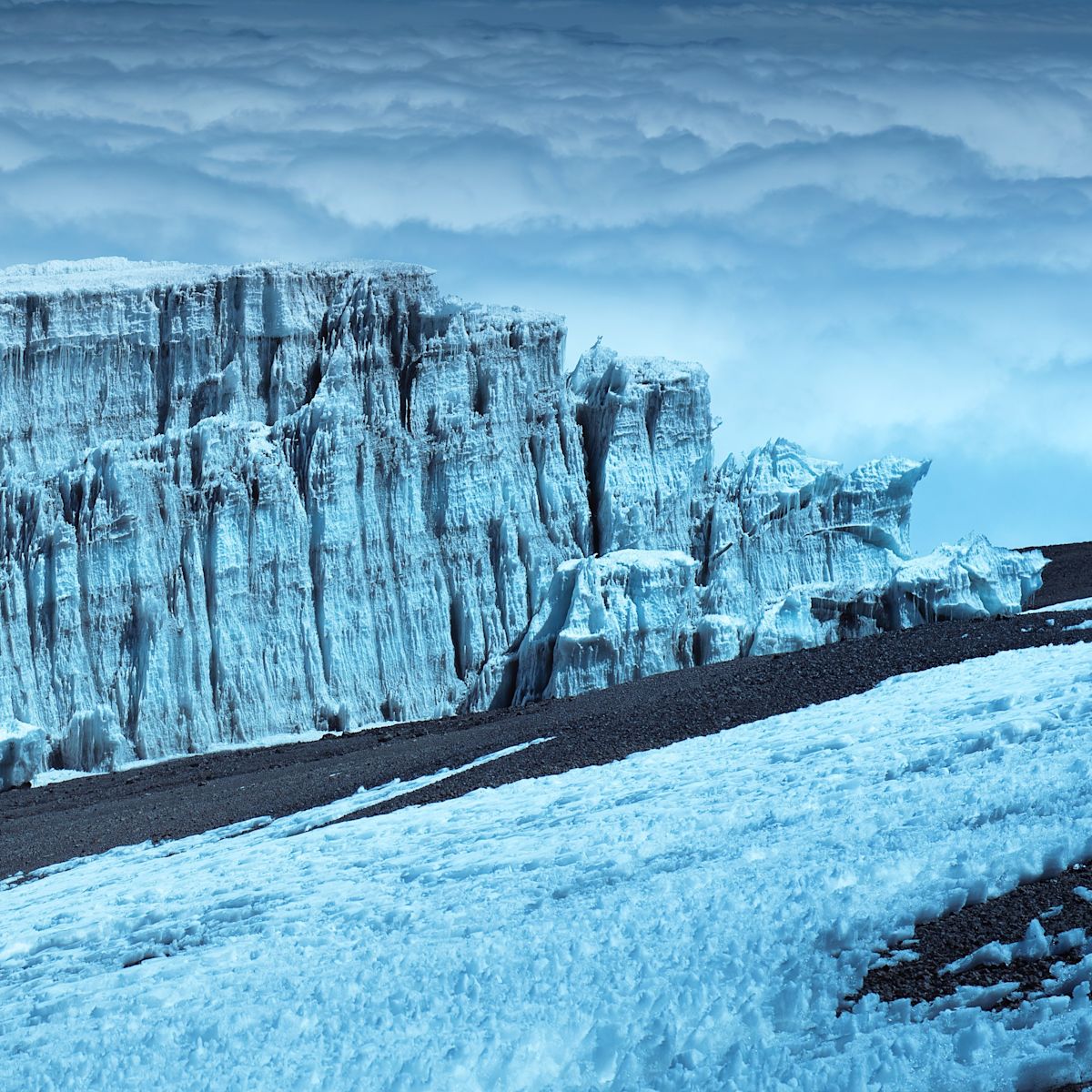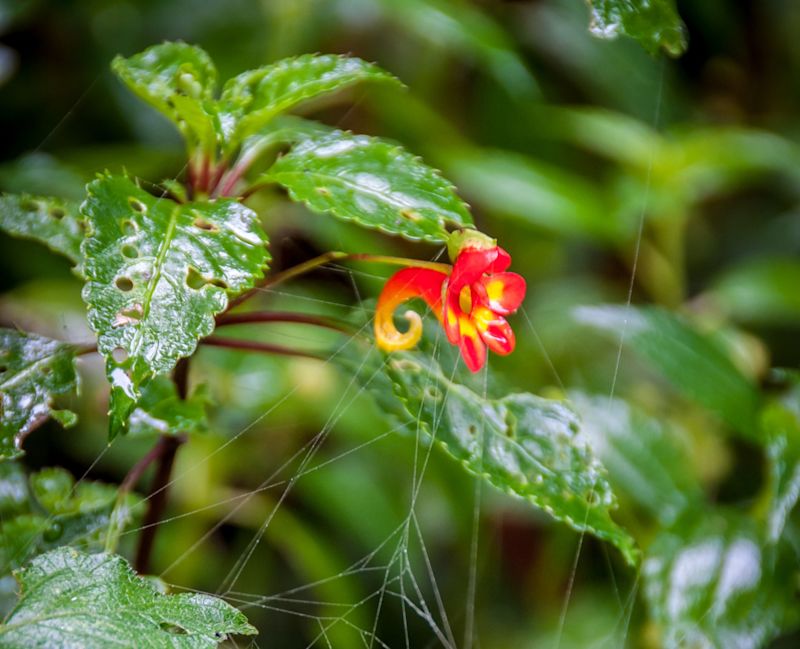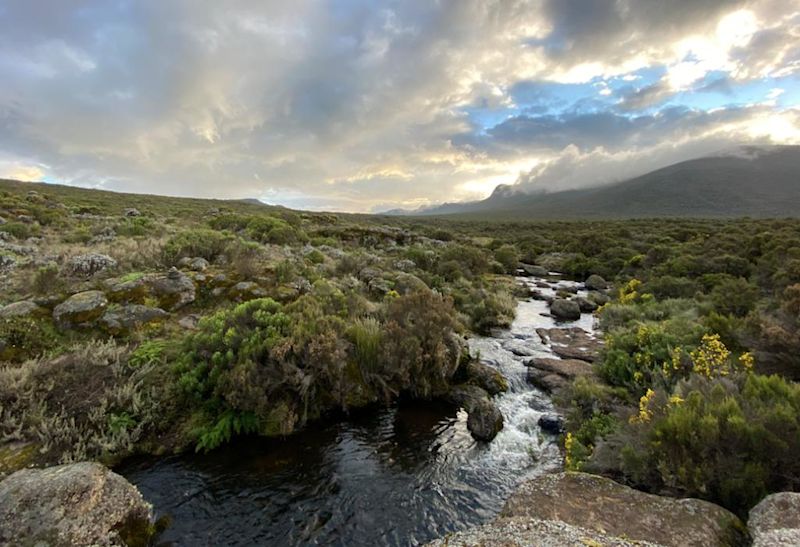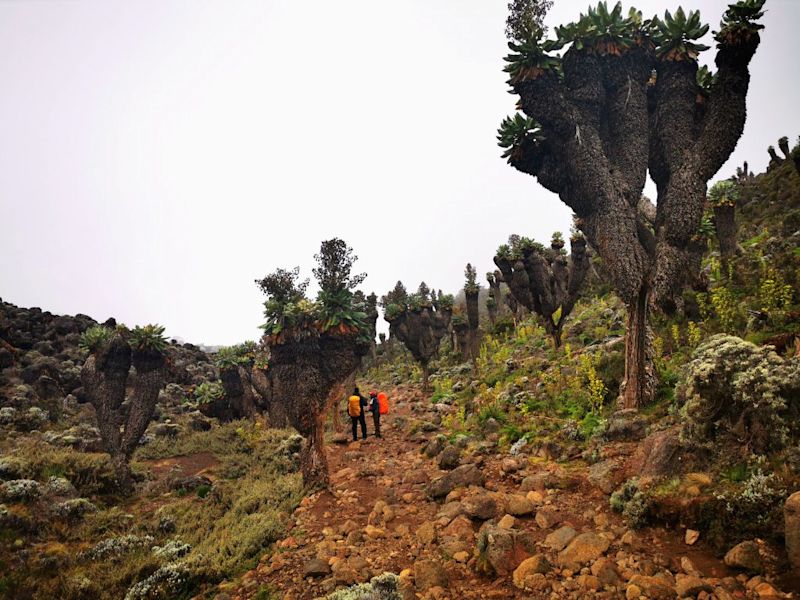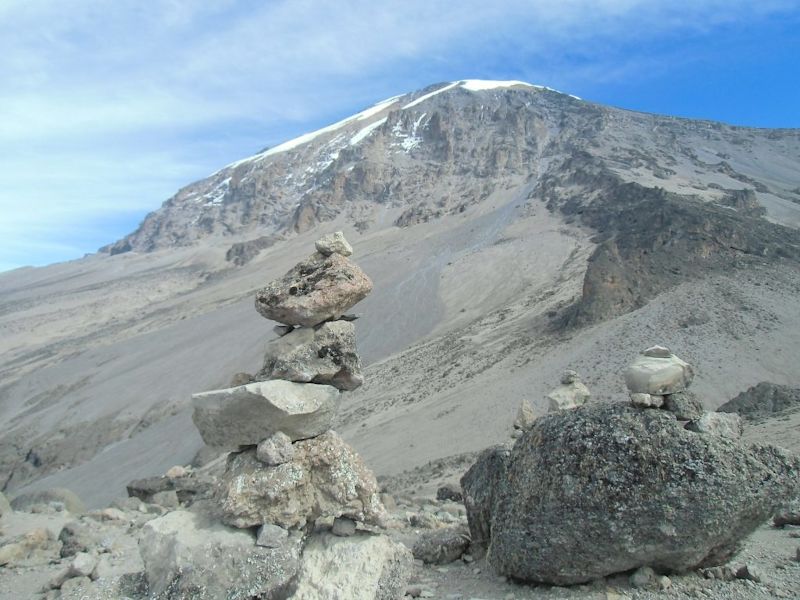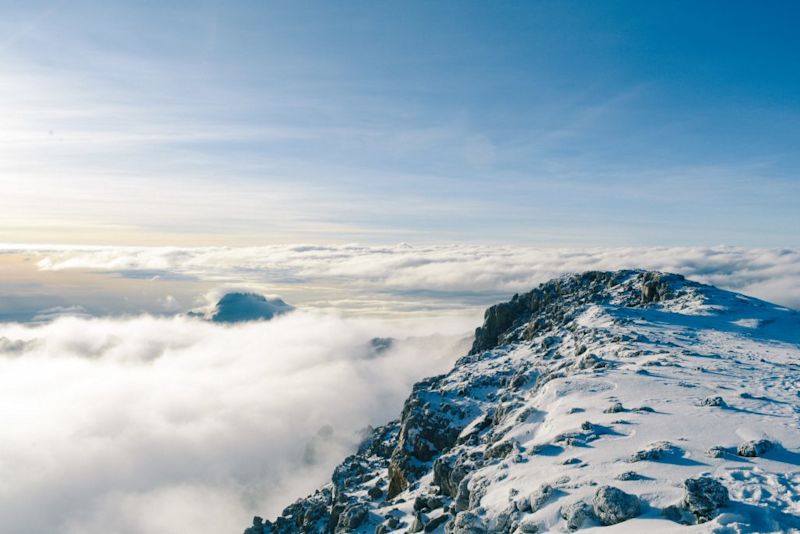Many people are surprised to learn that there are five distinct climate zones on Kilimanjaro! These are concentric bands where the conditions change with elevation.
Yet when we remind you that Kilimanjaro is the world's tallest free-standing mountain, it should make more sense. The mountain rises about 4,900 m above its plateau base, so a climate that changes dramatically as you climb upwards is only logical!
The five climate zones of Kilimanjaro are, from lowest to highest:
- Cultivated zone (800 m to 1,800 m)
- Rainforest zone (1,800 m to 2,800 m)
- Afro-alpine moorland zone (2,800 m to 4,000 m)
- Alpine desert zone (4,000 m to 5,000 m)
- Arctic zone (above 5,000 m)
We describe each zone below to help you prepare both mentally and practically for what's to come!
1. Cultivated zone (1,000 m to 1,800 m)
The lower climate zone of Kilimanjaro National Park is a bushland zone that has been given over to coffee and banana cultivation.
Kilimanjaro is famous for its single-origin coffee, and plantation tours are a popular outing among visitors to the region. In fact, we suggest going on a coffee plantation tour as one of the 10 best things to do in the Kilimanjaro region.
The mountain's lowest climate zone is home to many coffee and banana farms
The people living on the southern and eastern slopes of Mt Kilimanjaro are the Chaga, a prosperous, Bantu-speaking group. To the west and north are the famous Masai people. Also to the north are the Ongamo. They speak mostly Machame, which is the name that's been given to one of the Kilimanjaro routes.
The cultivated zone isn't a section of the park that you walk when climbing Mt Kilimanjaro – instead, all of the trailheads start higher up the mountain in the next ecosystem. Your tour operator will drive you to the start of your chosen trail, so you'll see the cultivation zone from your vehicle.
2. Rainforest zone (1,800 m to 2,800 m)
The rainforest is a very beautiful ecosystem
The rainforest zone often comes as a surprise to many who don't realise that the base of Kilimanjaro is ringed by rainforest.
The forest is thicker and lusher on the south and east sides of the mountains, which experience more rain. You can expect large, gnarled trees that are covered in moss, as well as thick undergrowth, plenty of creepers, lively streams and powerful waterfalls.
There are many flowers to enjoy at this elevation, but of particular note is the Kilimanjaro impatiens. This beautiful, red-and-yellow flower can be found nowhere else in the world – it lives only in the forest at the base of Mt Kilimanjaro!
A Kilimanjaro impatiens
During the day it can get pretty hot in the forest. Many trekkers stop to walk this section of the trail in shorts and a shirt. If you trek in one of the rainy seasons, the paths can of course get pretty muddy and slippery.
We discuss the many birds and other animals like duikers and Old World monkeys you can hope to spot in Animals on Kilimanjaro.
3. Afro-alpine moorland zone (2,800 m to 4,000 m)
The moorland is arguably the mountain's most beautiful ecosystem
The Afro-alpine moorland zone (also known as the heather zone or just the moorland zone for short) is a special zone. We say this because while it boasts less biodiversity than the forest, you find an assortment of truly unusual vegetation here. In this zone you're above the trees of the forest, walking along rocky paths among beautiful grasses, giant heathers, red-hot pokers, and yellow proteas.
Iconic giant groundsels can be found in the moorland zone of Kilimanjaro
Notably, this is the elevation where you start to encounter top-heavy giant groundsels. Giant groundsels (also called tree senecios) can grow up to 5 m, and sprout small yellow flowers at the top. Then there's also the giant lobelias, each of which has a strikingly large and fat infloresence (or 'column') growing out of a spiky rosette base.
4. Alpine desert zone (4,000 m to 5,000 m)
Very little grows in the alpine desert zone of Kilimanjaro
The alpine (or highland) desert zone is very inhospitable, and you start to feel like a properly hardcore trekker up here. The plants living in the heart of this zone are tough cookies, as they have to put up with the blazing sun in the day and sub-zero temperatures at night. And almost no rain. You'll find mostly hardy grasses, lichens and mosses.
The odd eland (a large antelope) might make its way up here on occasion, but basically don't expect to see any wildlife up in this zone.
5. Arctic zone (above 5,000 m)
The summit of Mt Kilimanjaro is an inhospitable arctic zone – with amazing views!
In the arctic zone at the summit of Mt Kilimanjaro, it’s all dirt, ice and scree and, at certain times of the year, snow.
The top of Kilimanjaro contains three volcanic cones:
- Kibo – it's highest point is called Uhuru Peak and is 5,895 m, and this is the 'summit' of Kilimanjaro.
- Mawenzi – it's highest point is 5,149 m.
- Shira – it's highest point is 3,962 m.
You also have the truly beautiful Furtwangler Glacier at the top of Kilimanjaro. The glacier is a remnant of the ice cap that covered the entire mountaintop a century ago. The summit of Kilimanjaro experiences night-time temperatures of -7 to -29 °C. Arctic, indeed.
To stand on Uhuru Peak – the very tippy-top point of Kilimanjaro – and gaze out over the mighty mountain you've just conquered ... well, it's hard to describe all the happy emotions! You'll just have to experience them for yourself. 🙂
The famous wind-battered sign marking the highest point on Kilimanjaro
